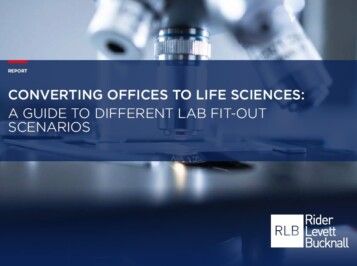Even before the pandemic hit in 2020, Life Sciences was a rapidly growing and truly global industry with an annual turnover in the UK alone of £89 billion and employing 268,000 people[1].
The last few years have only accelerated this rapidly growing market and the golden triangle of Cambridge, Oxford and London can no longer accommodate the demand for lab space. Combine this with the impact of hybrid working on the commercial sector, there felt an obvious solution of looking to office space to satisfy the growing demand for laboratories.
The BCO’s Guide to Specification of Offices has already provided the definitions of shell and core, CAT A and CAT B to help adapt the challenges of changing workspaces. At RLB we have complemented this by creating a Guide to Different Lab Fit Out Scenarios, identifying the challenges and opportunities, and outlining what the programme, cost and timeframe for conversion might look like for the refitting of office to life science spaces.
[1] Department of Health& Social Care, Bioscience and Health Technology Sector Statistics 2020
FURTHER INFORMATION:




